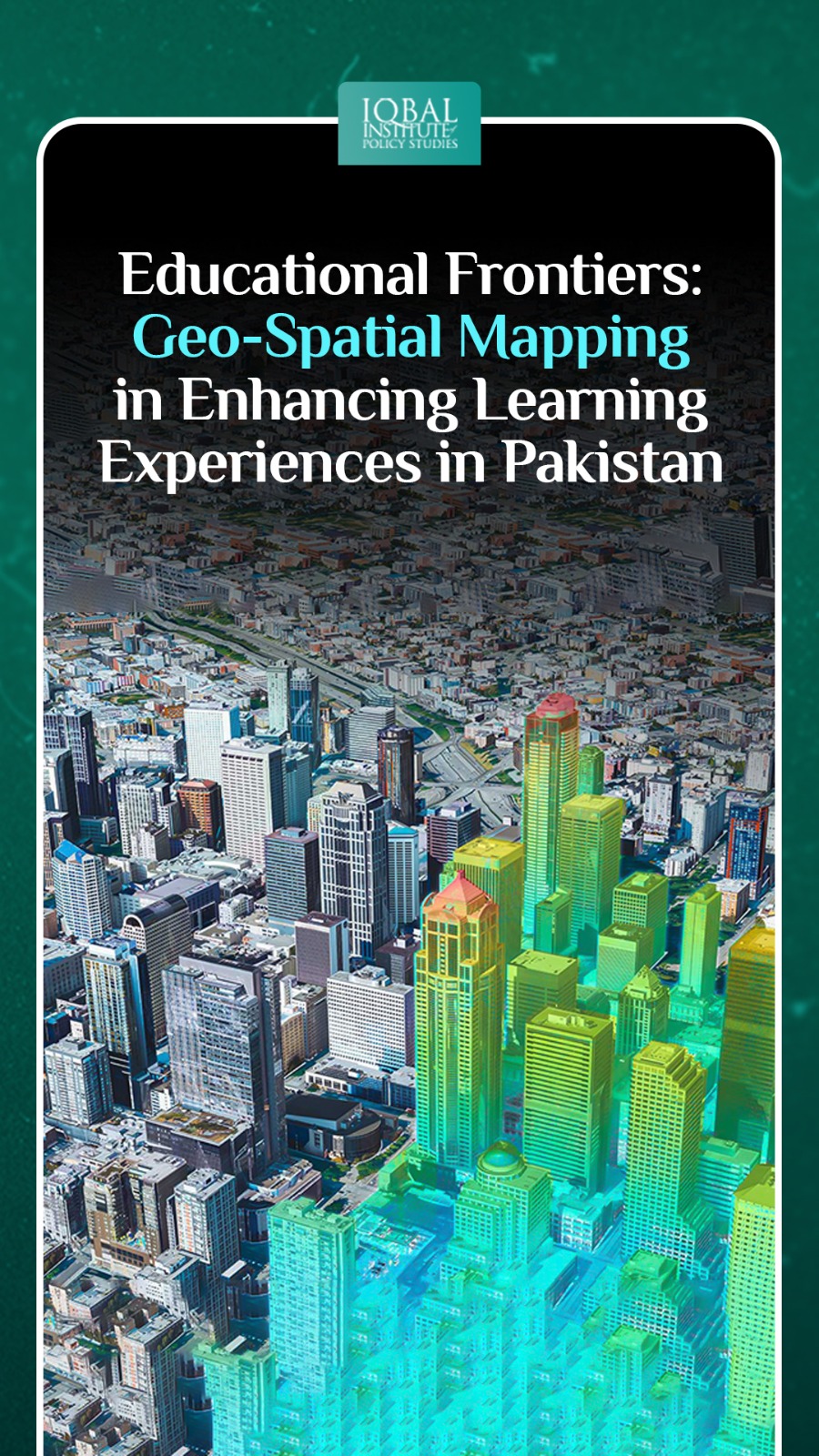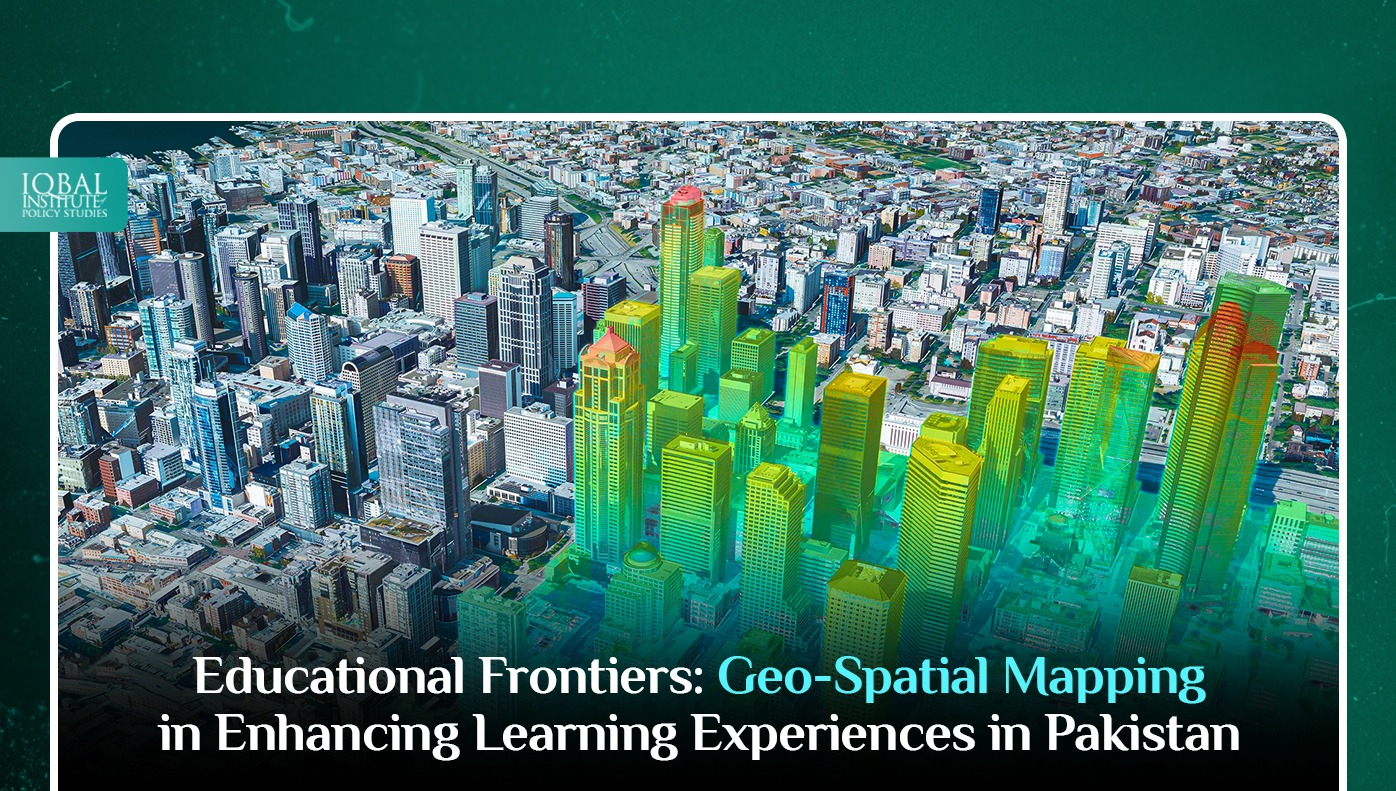In the rapidly evolving landscape of educational technology, the integration of geo-spatial mapping is catalyzing a profound shift in learning experiences throughout Pakistan. This comprehensive exploration aims to delve into the intricate layers of the impact that geo-spatial mapping is having on education, transcending traditional boundaries and reshaping the way students engage with the world. From its evolutionary trajectory to its real-world applications, influence on STEM education, interactive learning paradigms, the cultivation of geo-literacy, and the challenges of infrastructure and training, this blog aims to dissect the multifaceted dimensions of how geo-spatial mapping is transforming the educational frontiers of Pakistan.
Mapping the Classroom: Evolution of Educational Technology
To truly appreciate the transformative power of geo-spatial mapping, it is essential to trace its evolution. Traditional geography lessons, reliant on static maps and textbooks, are giving way to a dynamic era where Geographic Information Systems (GIS) technologies facilitate interactive learning experiences. The shift from passive reception to active participation marks a seismic change in how students perceive and interact with geographical concepts, paving the way for a more immersive and engaging educational experience.
Geo-spatial mapping introduces a dynamic and interactive element to the classroom. Rather than passively absorbing information from static maps, students can actively engage with live geographic data. This shift from two-dimensional representations to dynamic, real-time mapping not only captures the students’ interest but also provides a more tangible understanding of spatial relationships and geographical patterns.
Bridging the Knowledge Gap: Real-world Applications in Education
Geo-spatial mapping serves as a bridge between theoretical knowledge and real-world applications, offering students unprecedented access to live geographic data. This capability allows them to explore and analyze complex global issues, from climate change patterns to urban development dynamics. By grounding education in real-world scenarios, mapping technologies empower students to develop a holistic understanding of the interconnectedness of various phenomena, fostering critical thinking and a deeper engagement with their studies.
For instance, in a geography class, students can analyze real-time weather patterns, track the movements of wildlife, or examine the impact of human activities on the environment. These practical applications not only make learning more relevant but also instill a sense of curiosity and responsibility for the world around them.
Geo-Spatial Mapping in STEM Education: Nurturing Future Innovators
The integration of geo-spatial mapping transcends the traditional boundaries of geography, extending its influence into STEM education. Through GIS applications, students can participate in interdisciplinary projects that demand data analysis, spatial reasoning, and problem-solving skills. This not only enhances their technical competencies but also instills a mindset of innovation and curiosity, preparing them for the demands of future careers in science, technology, engineering, and mathematics.
STEM education is at the forefront of preparing students for the challenges of the modern workforce. Geo-spatial mapping offers a powerful toolset for STEM learning by providing a platform for students to apply theoretical knowledge to real-world problems. For example, students can use mapping tools to analyze and visualize data related to environmental changes, infrastructure planning, or disease outbreaks, fostering a hands-on and collaborative approach to problem-solving.
Interactive Learning: From Static Maps to Virtual Exploration
Geo-spatial mapping introduces an unprecedented level of interactivity into the educational sphere. Students are no longer confined to static maps; instead, they can embark on virtual journeys, exploring different regions, historical landmarks, and ecosystems in three-dimensional space. This dynamic approach not only captures students’ interest but also caters to diverse learning styles, ensuring that education is accessible and engaging for a broad spectrum of learners.
Interactive learning experiences provide students with the opportunity to actively engage with the material, promoting a deeper understanding and retention of information. Through virtual exploration, students can navigate historical events, explore geographical features, and simulate scientific experiments, all within the confines of the classroom. This immersive learning experience not only enhances comprehension but also cultivates a sense of curiosity and wonder.
Geo-Literacy: Empowering Students with Spatial Awareness
As the world becomes increasingly interconnected, geo-literacy emerges as a critical skill for navigating the complexities of the 21st century. Geo-spatial mapping empowers students with spatial awareness, teaching them to interpret and analyze patterns, make informed decisions, and communicate effectively using spatial information. This skill set extends far beyond the confines of the classroom, proving invaluable in diverse professions such as urban planning, environmental management, and beyond.
Geo-literacy goes beyond memorizing geographical facts; it involves understanding the implications of location on various aspects of life. Geo-spatial mapping equips students with the ability to interpret maps, analyze spatial data, and make informed decisions based on geographic information. This skill becomes particularly relevant as students transition to higher education and the workforce, where an understanding of spatial relationships is crucial in fields such as geography, environmental science, urban planning, and beyond.
Overcoming Challenges: Infrastructure and Training
While the potential benefits of integrating geo-spatial mapping into education are substantial, addressing infrastructure and training challenges is imperative. Ensuring that schools have access to the requisite technology and that educators receive comprehensive training is fundamental for the successful implementation of mapping tools in the classroom. Collaborative efforts between educational institutions, government bodies, and technology providers are paramount to overcoming these challenges and creating an inclusive and sustainable learning environment.
Infrastructure challenges often revolve around the availability and affordability of technology in educational institutions. Many schools in Pakistan may lack the necessary hardware, software, and internet connectivity to fully leverage the potential of geo-spatial mapping. Bridging this digital divide requires concerted efforts from government bodies, NGOs, and the private sector to invest in the necessary infrastructure.
Training educators is equally crucial to the successful integration of geo-spatial mapping into the curriculum. Many teachers may be unfamiliar with GIS technologies and how to incorporate them effectively into their lessons. Professional development programs, workshops, and ongoing support are essential components of ensuring that educators are equipped with the skills and confidence to integrate geo-spatial mapping into their teaching practices.
Conclusion
Geo-spatial mapping is not merely a tool; it is a catalyst for a paradigm shift in education throughout Pakistan. By seamlessly integrating mapping technologies into the curriculum, educational institutions have the potential to equip students with the skills and knowledge needed to navigate an increasingly complex and interconnected world. The impact of geo-spatial mapping extends beyond the classroom, influencing career choices, fostering a sense of global citizenship, and preparing the next generation of leaders and innovators.
As Pakistan embraces the educational frontiers unlocked by geo-spatial mapping, the nation takes a significant step towards creating a future-ready and empowered generation poised to tackle the challenges of the modern world. The journey involves overcoming challenges related to infrastructure and training, but the long-term benefits are immense. Through a collaborative and forward-thinking approach, Pakistan can position itself at the forefront of educational innovation, ensuring that its students are well-prepared to thrive in the evolving landscape of the 21st century.
This article is written by Radma Nouman. Radma is a research analyst at the Iqbal Institute of Policy Studies (IIPS).



Leave a Reply